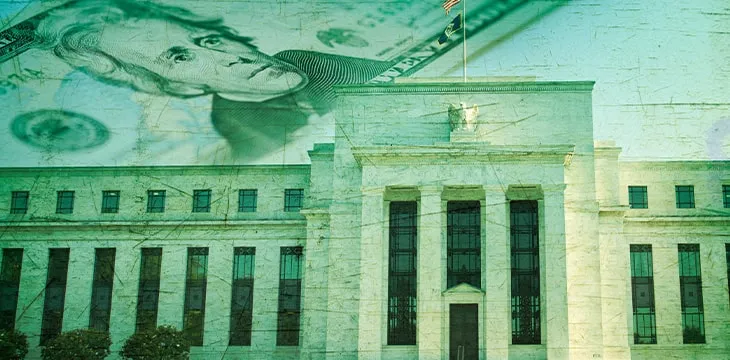|
Getting your Trinity Audio player ready...
|
The Federal Reserve has achieved the Federal Funds Effective Rates (FEDFUNDS) of 4%, and they remain focused on bringing down inflation to their 2% target, by increasing the interest rates even further in upcoming meetings and by reducing the balance sheet.
It should be noted that in the entire history of virtual currencies, there hasn’t been this strict Fed policy. Since the emergence of Bitcoin, the maximum interest rates at any time have remained at 2.5%.
The dying activity
Due to the strict monetary policy of the Fed and the looming recession, most of the retail activity and participation in the digital asset industry is dying. On a year-over-year basis, Coinbase (NASDAQ: COIN) volume is down by over 50%, and OpenSea non-fungible tokens (NFTs) trade volume is down by over 80%.
Moreover, the biggest digital currency-metaverse by market capitalization, Decentraland, was recently found to have only 40 active users despite having a valuation of $1.3 billion.
Big bags and no cash
With inflation hitting new highs and the Fed going reckless with its strong stance on the mighty dollar, most retail investors are being forced to realize the losses and liquidate their bags. This is why every little pump remains unsustainable and gets sold too fast. On the other hand, institutions remain stuck with illiquid (or heavy-impact) bags. Almost every other week, Grayscale BTC (GBTC) usually prints a new all-time-high discount versus the spot BTC, making it very obvious that there is very little institutional interest in the current bearish conditions.
So it is quite clear that in digital currency, just like in stocks and other markets, neither the institutions nor the retail can handle the financial condition that the Fed’s harsh policy has created, leaving slim chances of a significant influx of retail activity in this industry before the next quantitative easing kicks in.
Digital asset bank runs
Though the bank runs should not really make any sense in this space, some digital asset-related companies “borrow” user funds to trade and attempt to grow their own portfolios. The very recent FTX collapse happened because SBF’s hedge fund Alameda used FTX’s users’ funds to cover up their losses and go big on their investments. Similarly, the lending companies like BlockFi and Celsius ended up in Chapter 11 bankruptcies due to leveraging users’ funds into risky investments.
Though this is all due to greed, the Fed’s ultra-loosened policy after the COVID-19 emergence is somewhat responsible for igniting these schemes in the first place. Many of these firms weren’t prepared well for a stronger dollar and thought the pace of money flowing in would keep on outpacing the money flowing out.
What’s next?
With the core inflation numbers of November finally coming below expectations after a streak of going above expectations, we can expect the Fed to slow down the pace of upcoming hikes. Instead of projecting for 50-75 bps hikes, we can watch out for 25-50 bps hikes. Though this is a good sign for everyone, many Fed speakers have assured the markets that they won’t prefer premature easing of policy (and rate cuts), hinting at keeping a restrictive policy until at least the first half of 2023.
Until then, the tough times for risky asset classes, including virtual currencies, is expected to persist.
Watch: The BSV Global Blockchain Convention panel, Law & Order: Regulatory Compliance for Blockchain & Digital Assets

 07-03-2025
07-03-2025 





